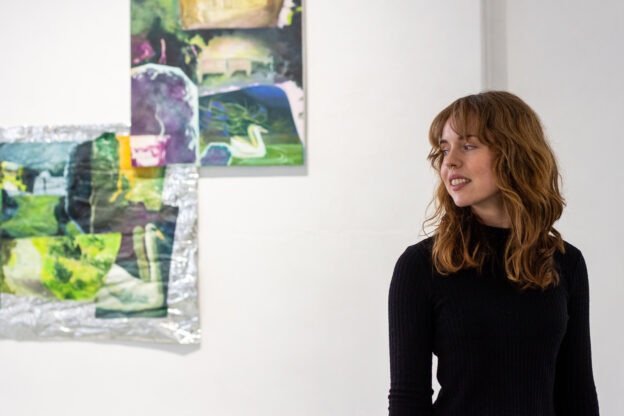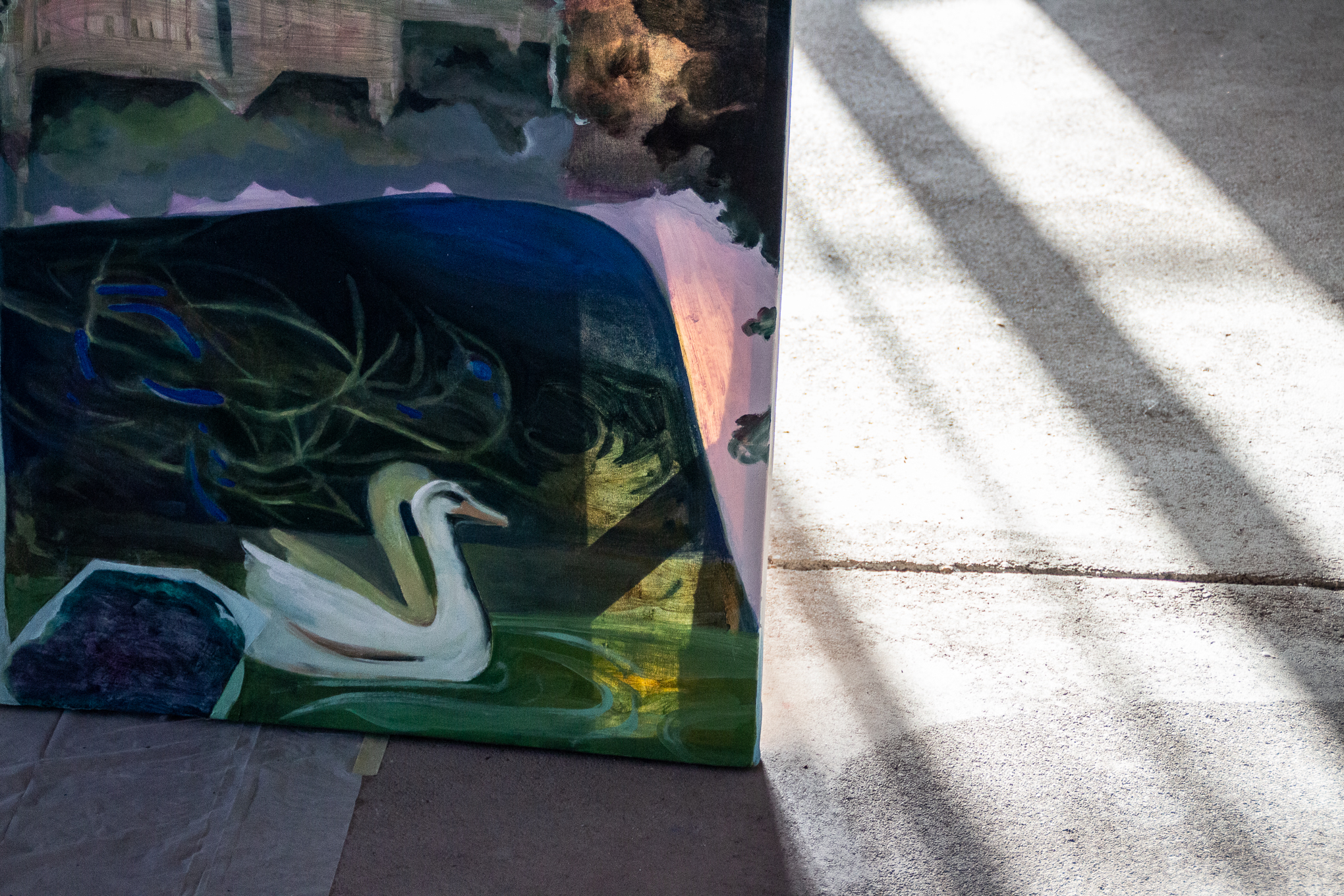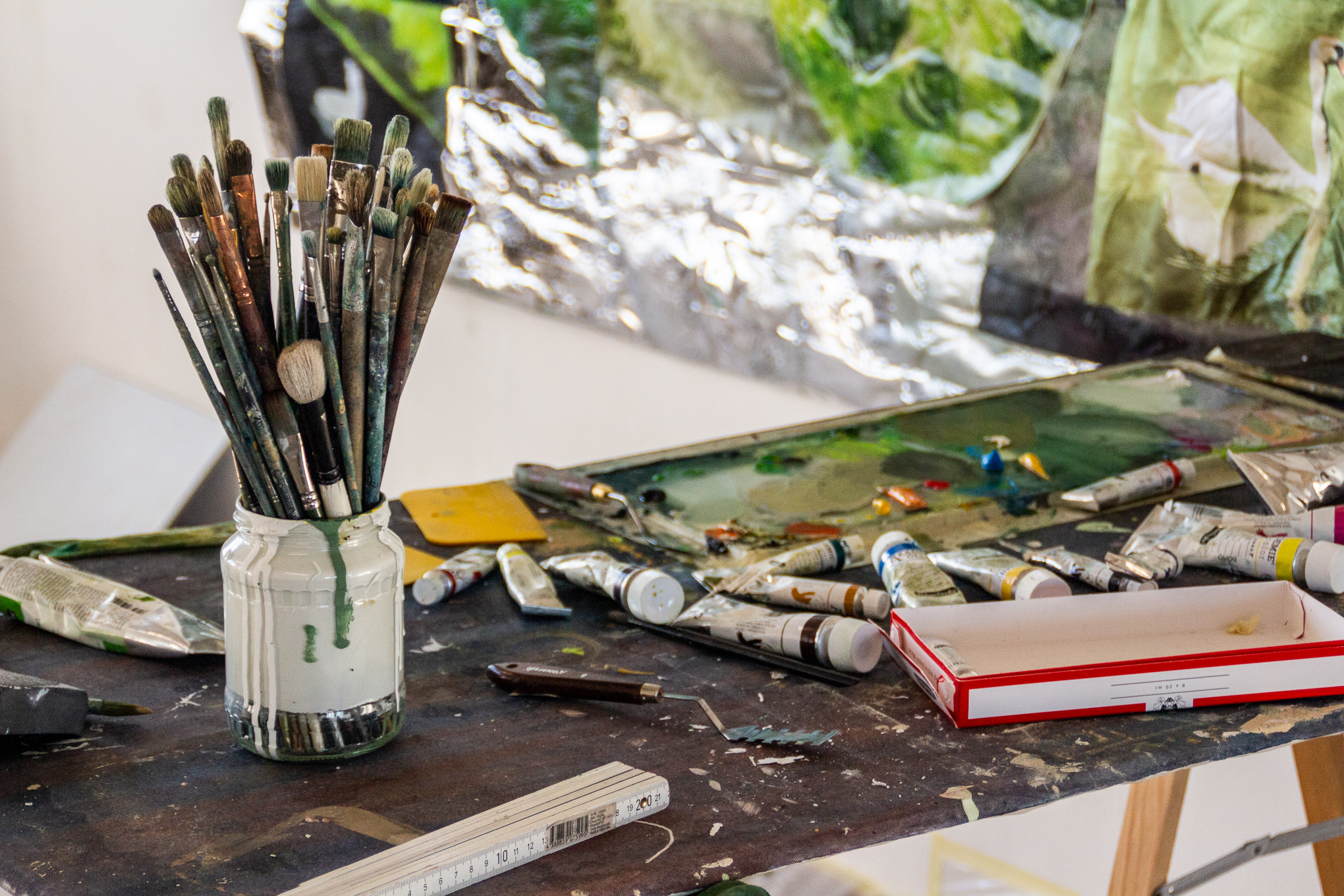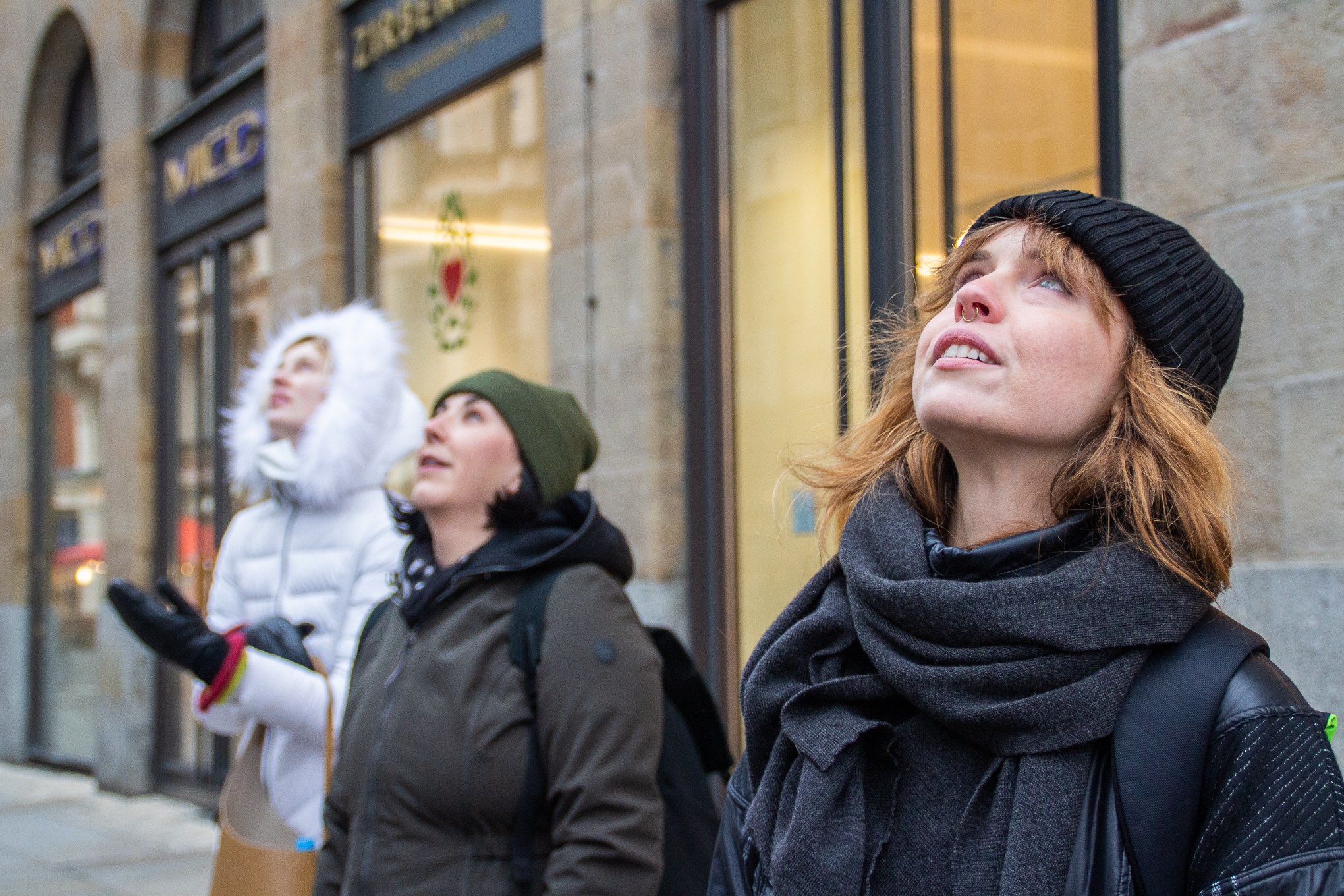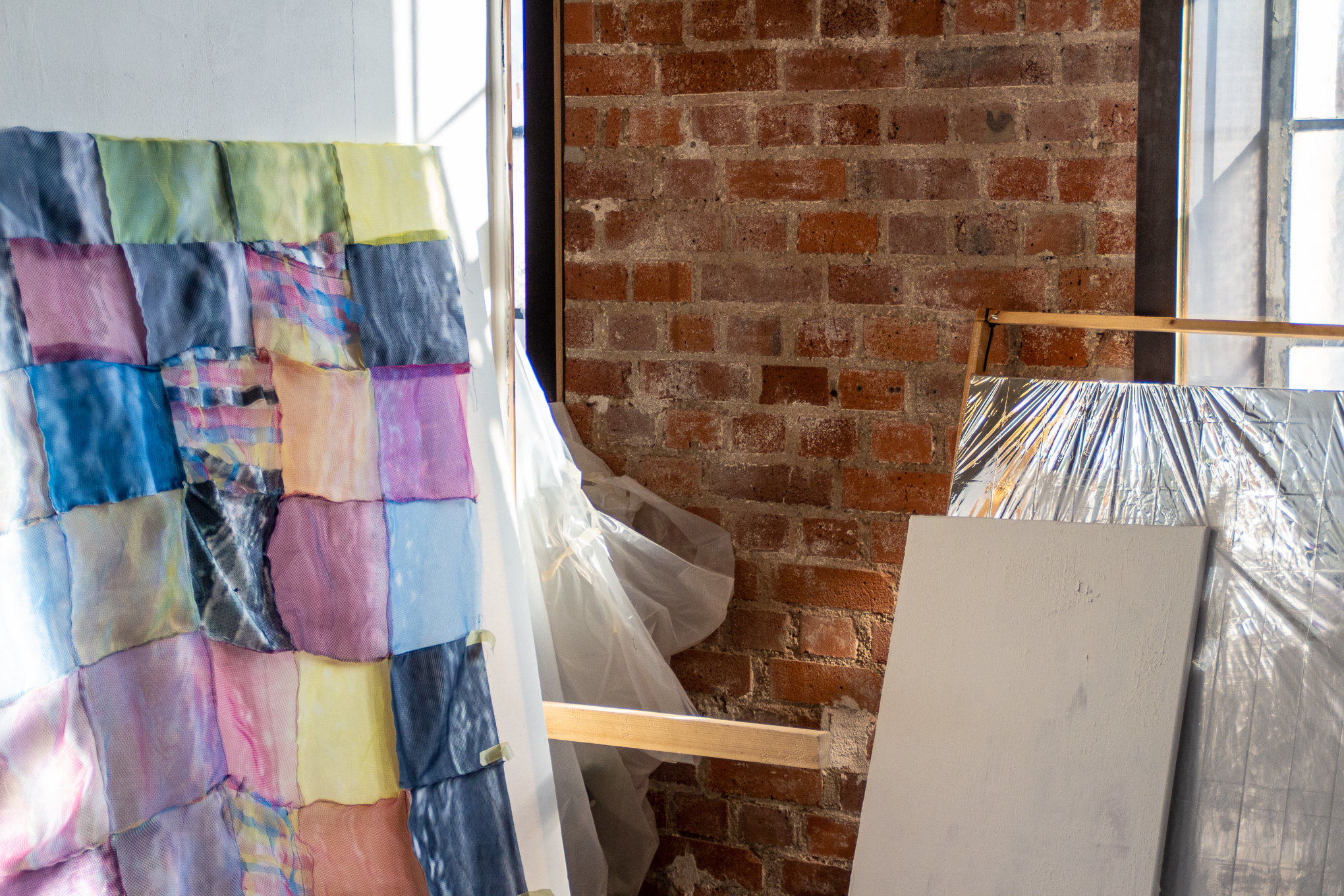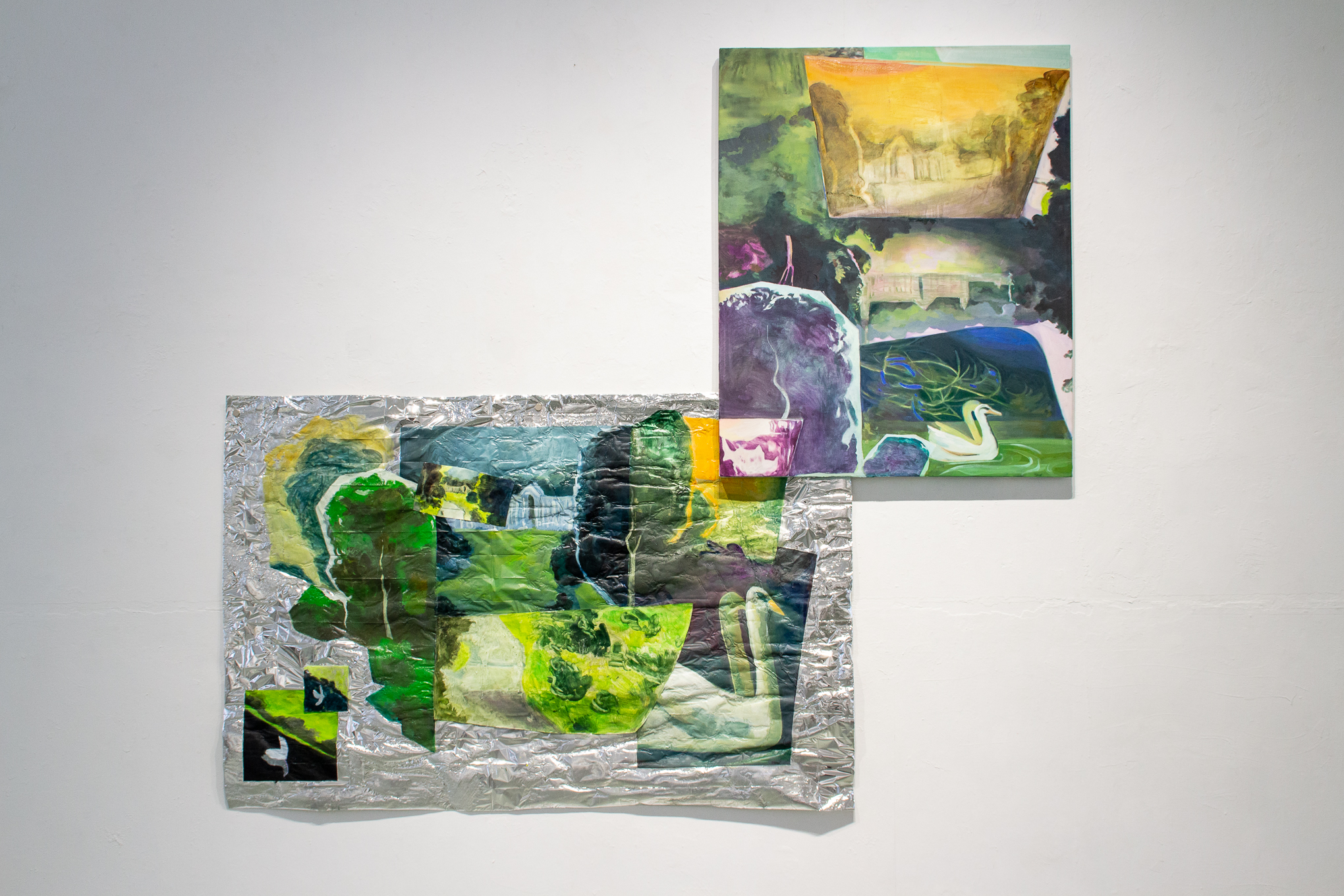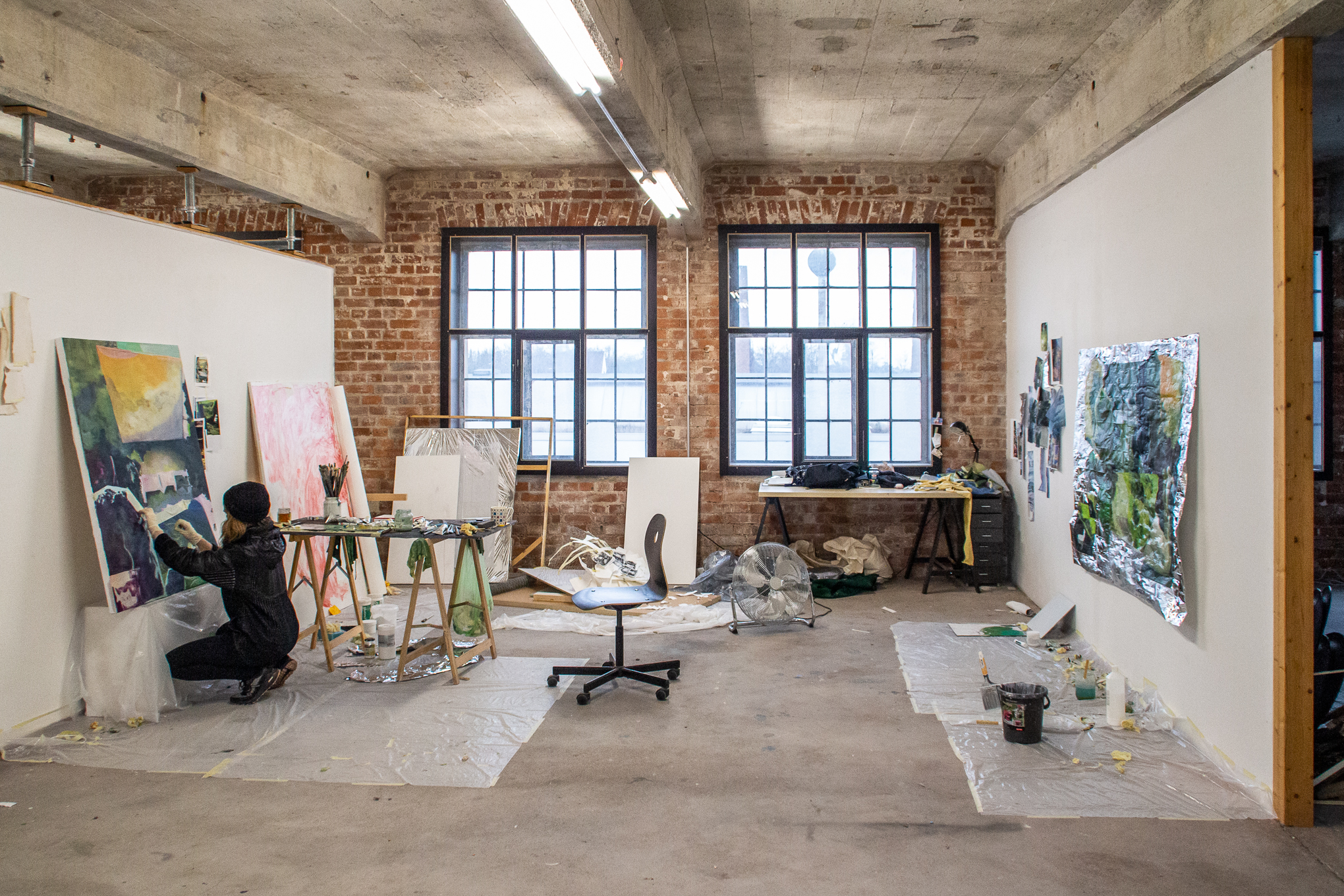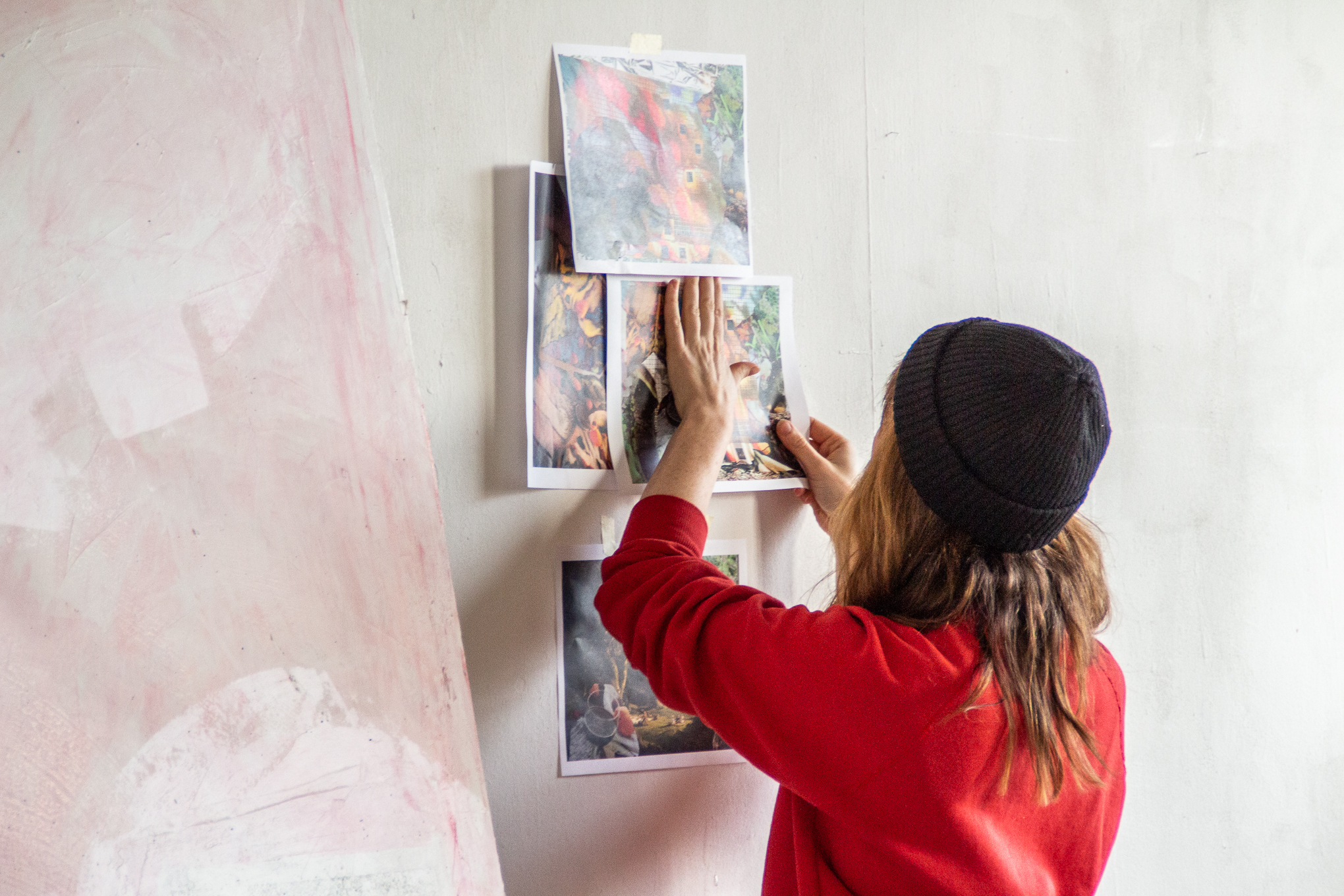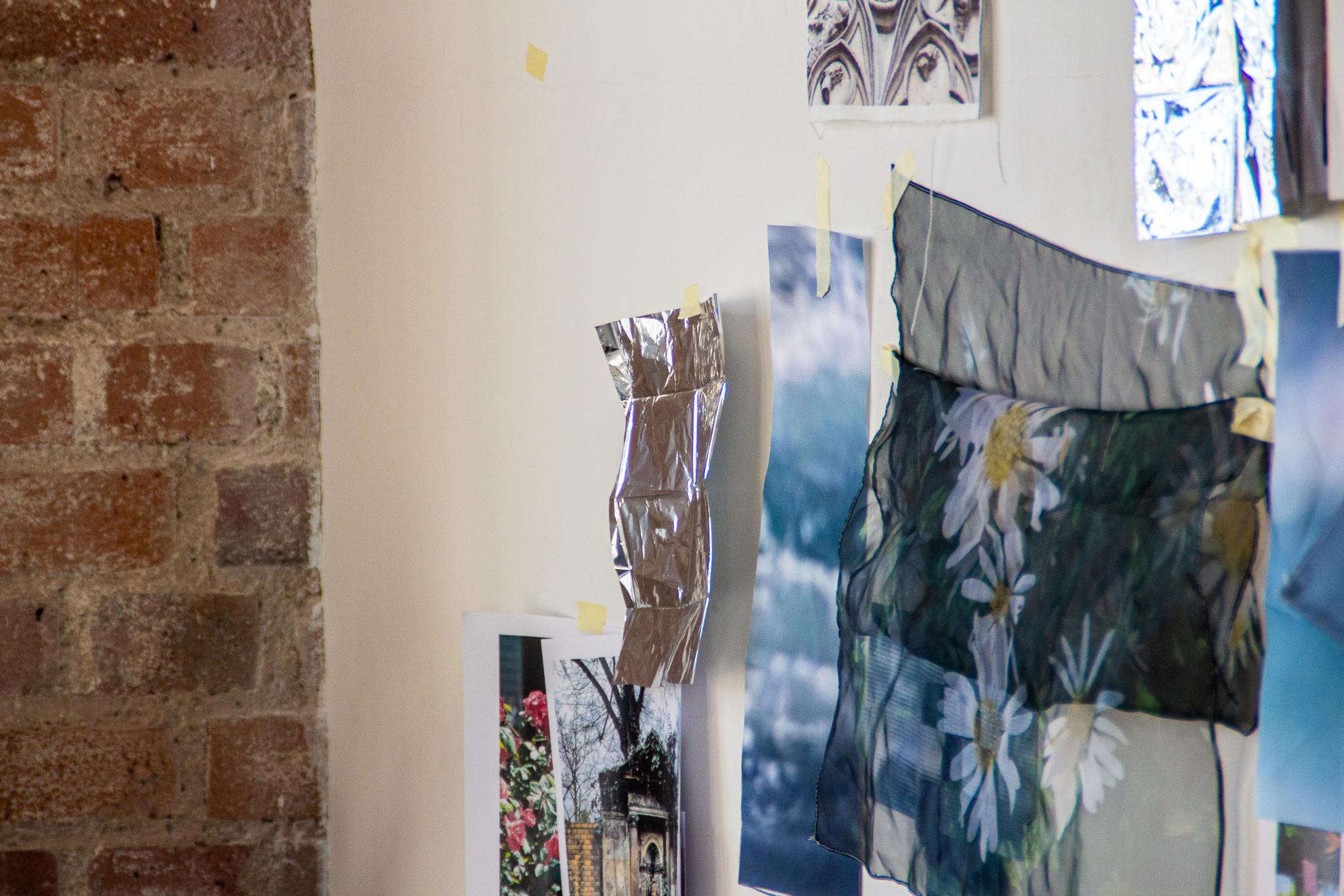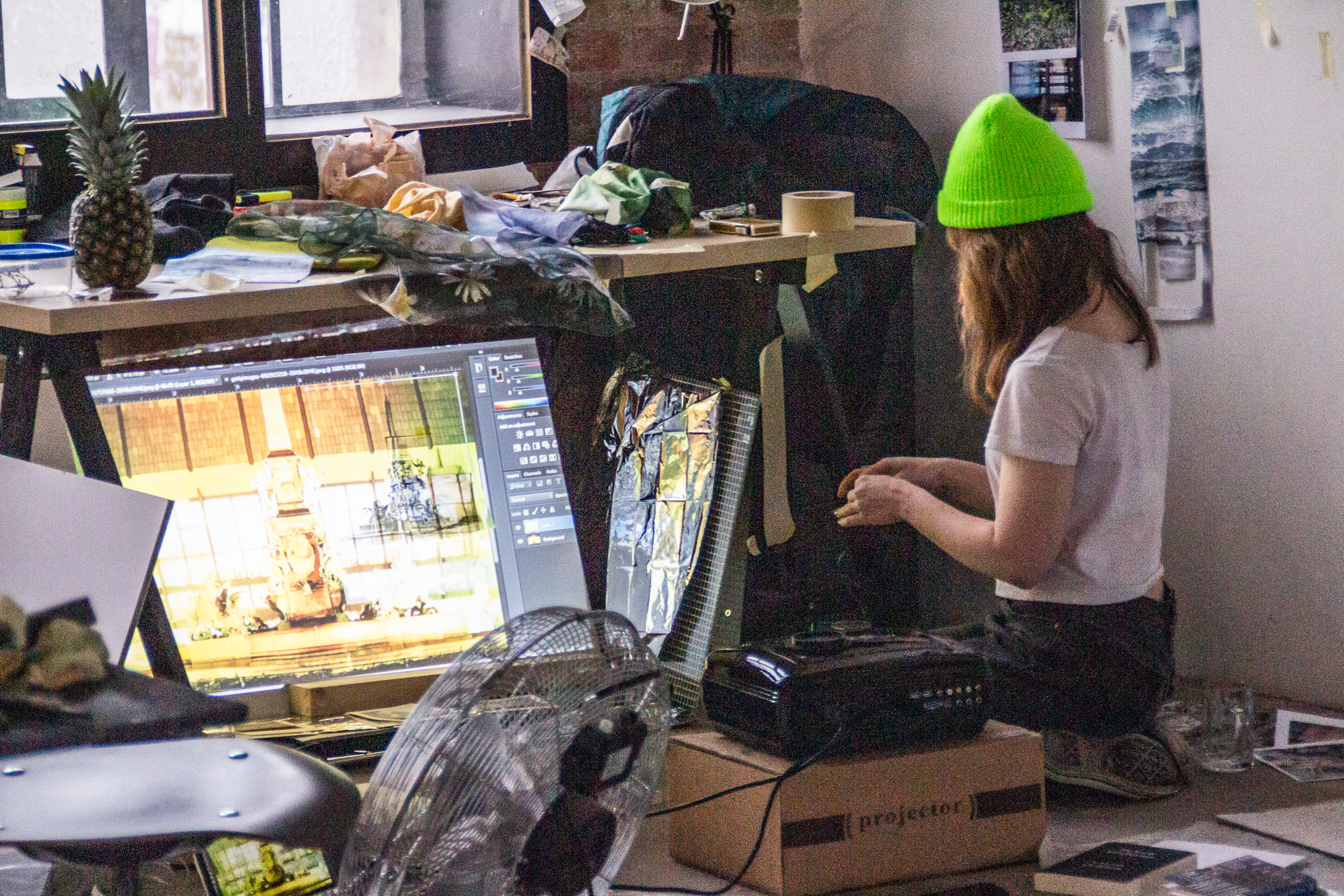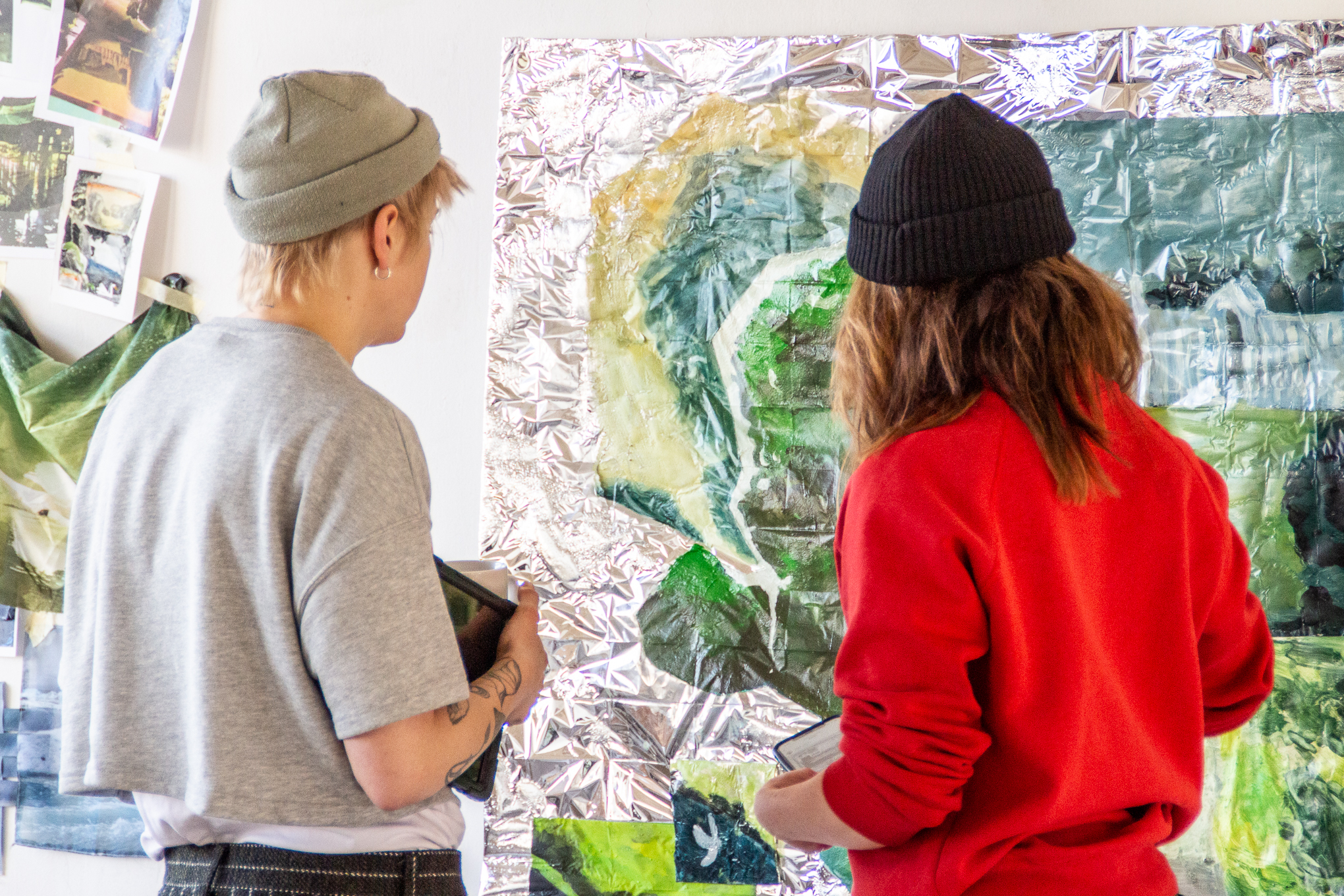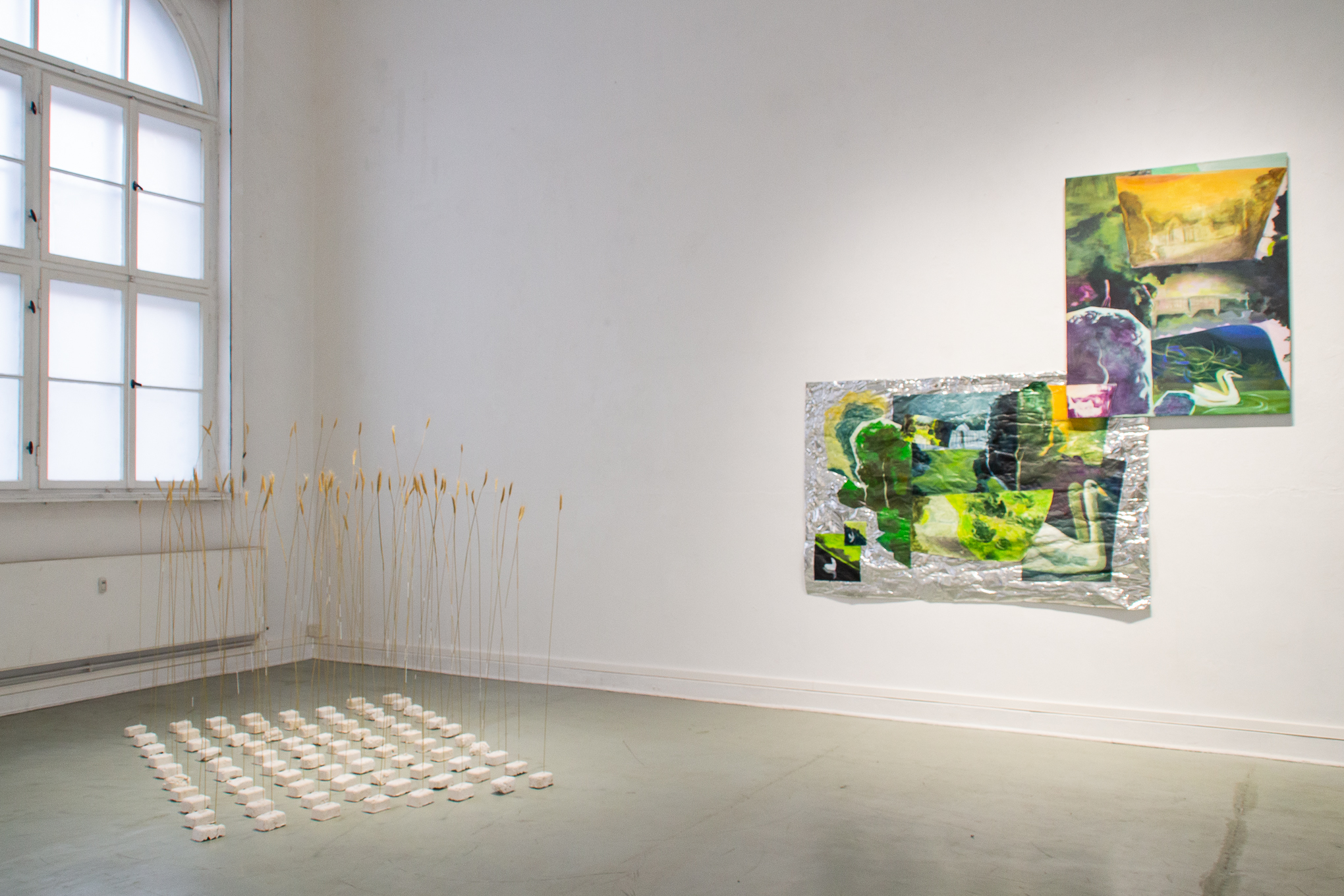Close your eyes. Use your imagination and place yourself in a desolate, untouched dream place. Imagine you are taking a journey, a hike or a bike trip. Surrounded by this pristine landscape right in front of your face, what will you do? Will you turn off your digital devices? Or would you rather memorize the view by recording it with your camera? In the modern world, we are overstimulated and constantly distracted by technologies. Each decision we make is factored by our entanglements with them. American Midwestern artist Molly Burt-Westvig, conceptualizes how the two different worlds we exist in, became completely enmeshed. In her paintings, she captures the phenomenon of memory and experience in a contemporary sense of both – digital and physical – spaces.
Assemblage of experiences
With the development of technologies, the practise of taking pictures of every aspect of our lives has become commonplace. Looking at the world through the eye of the camera, we frame the matter in a square of social pics. We look, but do we see? How do we currently experience being in a space? What and how do we memorize? Molly discovers her path to uncovering the answers through landscape paintings. As she builds on the typically historical genre, the outcome is an assemblage of vast perspectives where none of the answers are deemed appropriate or not. Treating landscape as a tool to explore and understand synchronicity with the world and the role of experience, she plays with the infinite possibilities.
Only painting on canvas gives Molly the feeling of being limited. Her unique and uncanny approach is to combine elements from the history of painting with socio-ontological aspects of digital space and social photography framing. Inherently we are endlessly distracted by devices, causing our experience of the present and the memory of our surroundings to divert. That being so, she exhibits those complexities by layering them in collages. The use of pictures, setting up reflective and non-reflective foils, collaging photographs and paintings – frame the perception of current visualizations. Hence, working with expanded painting allows Molly to critically assess the role of landscape.
Molly looks for answers in translations
Whether it’s a mosaic of shapes or an installation of delightful silks, the keynote in Molly’s work is a translation. “We are translating the experience, translating a place,” she says. Essentially, contemporary picture taking comes across as an idea of historical painting. The central role of the digital devices calls into question: What are we translating through that? When it comes to thinking about painting and the history of image making, it is about what the depiction essentially means. Both landscape painting and digital images capture a parallel experience and state the same thing: “I was here.”
photos by PILOTENKUECHE
Are you really there?
What makes me even more curious about Molly’s work is her attitude to what is being shown. It seems that the pictures we take for social platforms do not really indicate specific places or objects. Much like her paintings, they put forth an idea of space. Meanwhile, through digital distortions, what do we really experience while facing and capturing the view? Within different frameworks, catching the moment becomes a portal to an enmeshed world: the world where it’s possible that everything is merely about an idea of being in a space to experience.
Is memory fiction?
In addition to depicting the present, it is about memorization. Certainly the problem of a short attention span while we’re being distracted can be solved if we collect our memories in our smartphones. This will allow us to “remember” what we could have experienced. Further, Molly finds it interesting how this affects our color memory, which she considers to be the least affective type of memory. “I realized after returning to Iceland that I hadn’t remembered the colors of the auroras accurately because cameras are unable physically to capture the light spectrum we see in the sky.” This occurrence made her understand the power of color and the fiction of the camera. Tapping into critical assessment of travel photos and making pictures, it revealed a sad truth. What we see in the internet – doesn’t really exist. Going further, is what we consider a screen “memory” a fiction?
Not the illness, not the cure
There is nothing obvious or predictable in Molly’s work. Many layers of her mosaic works perfectly render our implications in permeating realities. Instead of criticizing it, she spotlights current obstacles and asks questions. Undoubtedly it is a time when the role of existing and experiencing seems to be fading as we tread the fine line of being in both digital and real spaces simultaneously. Maybe the new realm is “not the illness, not the cure”. Her pieces force us to take time, to step back and take into consideration what it means to experience of the world around us.
written by Aleksandra Szapańska
You can find out the latest on Molly’s website. We hope you’ll come see the results of her work at PK at the upcoming shows…
WARM WHITE COW
vernissage:
19.02.22 19Uhr
performance:
Janne Steinhardt
open:
20, 24-27 Feb
14-19Uhr
Alte Handelsschule
75 Geisserstr
COZY CONCRETE CABLE STORE
vernissage:
19.03.22
19Uhr
performance:
Janne Steinhardt
Matilde Søes Rasmussen
open:
20-24 March 14-18 Uhr
PILOTENKUECHE
Franz-Flemming-Str 9

